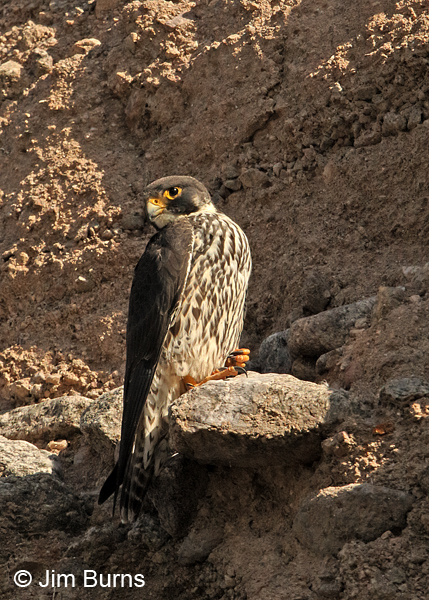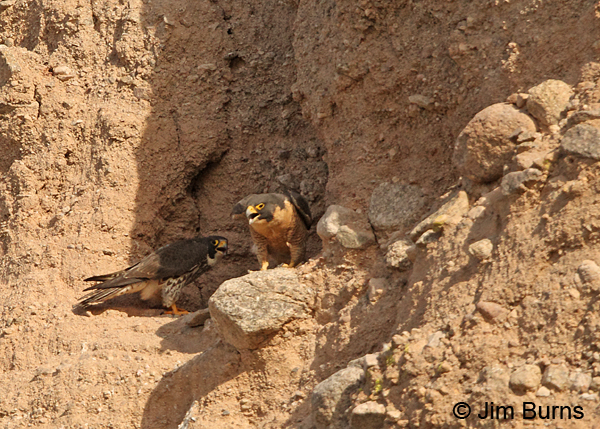
This is a birding column about a cougar. Hang in here with me as I try to explain.
For the past decade or so I’ve been aware of and periodically trying to photograph three different Peregrine Falcon aeries in the Phoenix area during breeding season. Peregrine photography is problematical, but not for the two reasons that might come first to mind: unlike Northern Goshawks, Peregrines will not physically attack humans in nest proximity and, unlike Golden Eagles, Peregrines will not immediately fly off half a mile at the first sign of humans around the nest. No, the problem with Peregrines is they have evolved, presumably to facilitate stooping on prey, to nest on the highest rock ledges in their territories. It’s rarely possible to get eye level to a Peregrine aerie.
My most recently discovered aerie ledge is near the top of a relatively low cliff that sits across a riparian corridor from a relatively high, accessible bluff. At this site I can actually see into the aerie though I am still not high enough to see eggs on the floor of the grotto. I think this Peregrine pair is incubating now because one of them, primarily the female, is always laying down lengthwise on the scrape in the shade provided by the rock overhang. So in about a month I’ll see from one to four eyasses (yes, that’s what Peregrine chicks are called!) in the aerie.
Or not. Peregrines mate for life and will typically reuse the same nest site, or alternate sites along the same cliff face, for many years consecutively. If one of a pair dies or is killed, the remaining bird will usually return to the same territory with a new mate. The female at this site, three years running now, is a robust anatum subspecies bird with heavy, wide dark barring on rich coral pink underparts, but this year she has a new mate, a curiosity which has me checking up on them with more regularity than usual.
This year’s male, as to be expected with all birds of prey, looks to be a third smaller than the aerie’s proprietress, but the curiosity is his plumage. Although his bare parts--eye ring, cere, and legs--are the same yellow-orange as the female’s, actually brighter and more orange than hers as befits a typical breeding season male, he still wears his juvenile plumage! This is a beautiful bird, upperparts so dark they appear black in the shadows, rows of thick, dark chocolate hearts on pure white underparts, and crisp dark chevrons on his leggings and undertail coverts. A typical juvenile Peregrine in this plumage would still have blue to slaty gray bare parts! Indeed I was unable to find a bird matching this description in the literature, and I’m calling him a “yearling male.”
So what you ask? Well, here’s so what. Female Peregrines typically breed at age three, a year earlier in depleted or expanding populations. Male Peregrines typically breed at four years of age. Moreover, yearling females are known more likely to breed successfully than yearling males. We won’t know if this young male was capable of fertilizing this new mate’s eggs until we see, or not, eyasses in the grotto by late May. Adding to the perplexity is the possibility that this male is the single chick I saw fledge from this aerie last June. So . . . leaving aside the genetic issues our species would call “incest,” we can at least say the female Peregrine at the aerie site I am monitoring this year is, in today’s social parlance, a “cougar.” Stay tuned. I’ll try to remember to let you know in June.
